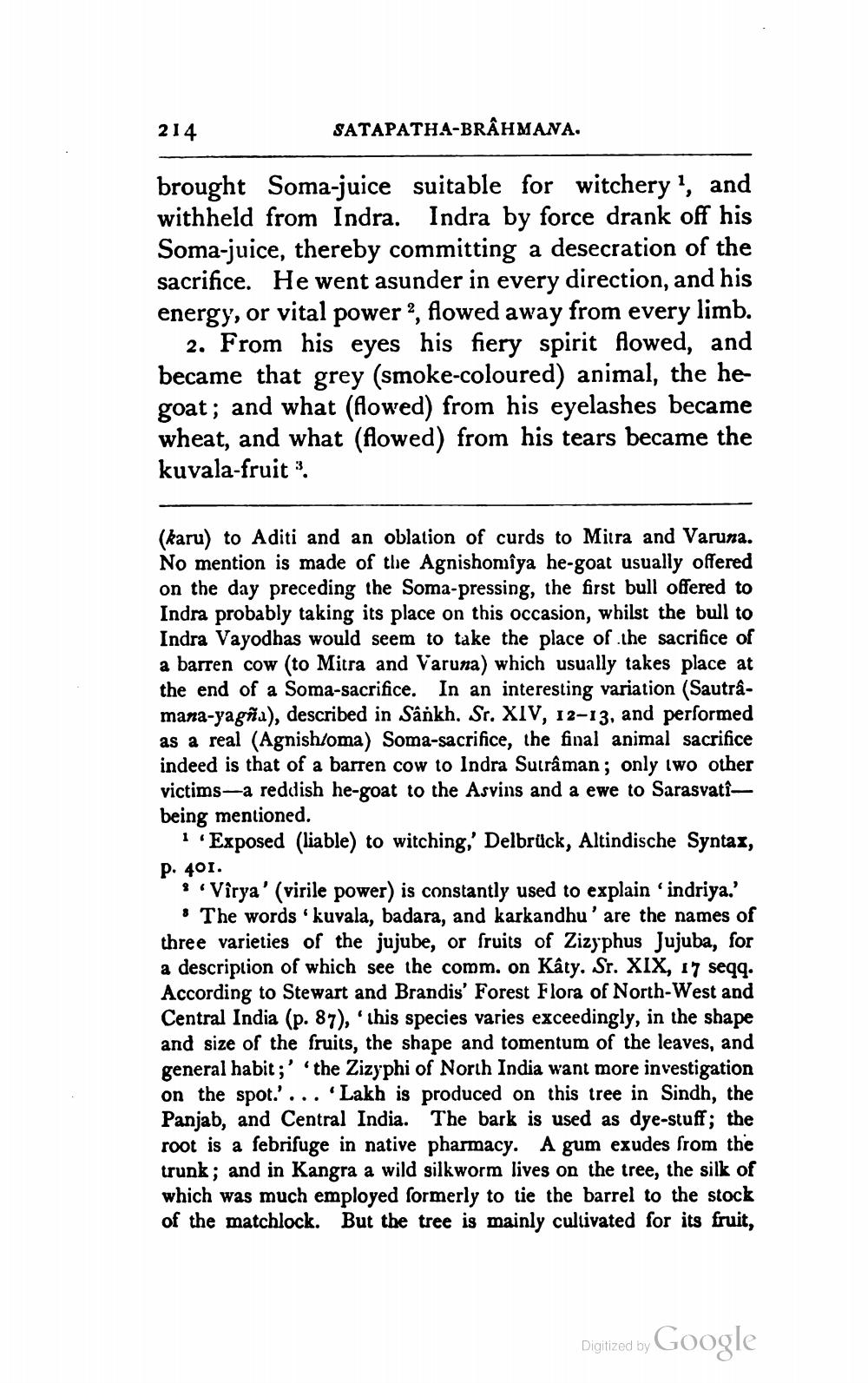________________
214
SATAPATHA-BRAHMANA.
brought Soma-juice suitable for witchery', and withheld from Indra. Indra by force drank off his Soma-juice, thereby committing a desecration of the sacrifice. He went asunder in every direction, and his energy, or vital power 2, flowed away from every limb.
2. From his eyes his fiery spirit Aowed, and became that grey (smoke-coloured) animal, the hegoat; and what (flowed) from his eyelashes became wheat, and what (flowed) from his tears became the kuvala-fruit
(karu) to Aditi and an oblation of curds to Miira and Varuna. No mention is made of the Agnishomîya he-goat usually offered on the day preceding the Soma-pressing, the first bull offered to Indra probably taking its place on this occasion, whilst the bull to Indra Vayodhas would seem to take the place of the sacrifice of a barren cow (to Mitra and Varuna) which usually takes place at the end of a Soma-sacrifice. In an interesting variation (Sautramana-yagña), described in Sânkh. Sr. XIV, 12–13, and performed as a real (Agnish/oma) Soma-sacrifice, the final animal sacrifice indeed is that of a barren cow to Indra Sutrâman; only iwo other victims-a reddish he-goat to the Asvins and a ewe to Sarasvati - being mentioned.
Exposed (liable) to witching,' Delbrück, Altindische Syntax, P. 401.
* Virya' (virile power) is constantly used to explain ‘indriya.'
• The words 'kuvala, badara, and karkandhu' are the names of three varieties of the jujube, or fruits of Zizyphus Jujuba, for a description of which see the comm. on Kâty. Sr. XIX, 17 segg. According to Stewart and Brandis' Forest Flora of North-West and Central India (p. 87), this species varies exceedingly, in the shape and size of the fruits, the shape and tomentum of the leaves, and general habit;' the Zizyphi of North India want more investigation on the spot.' ... 'Lakh is produced on this tree in Sindh, the Panjab, and Central India. The bark is used as dye-stuff; the root is a febrifuge in native pharmacy. A gum exudes from the trunk; and in Kangra a wild silkworm lives on the tree, the silk of which was much employed formerly to tie the barrel to the stock of the matchlock. But the tree is mainly cultivated for its fruit,
Digitized by Google




